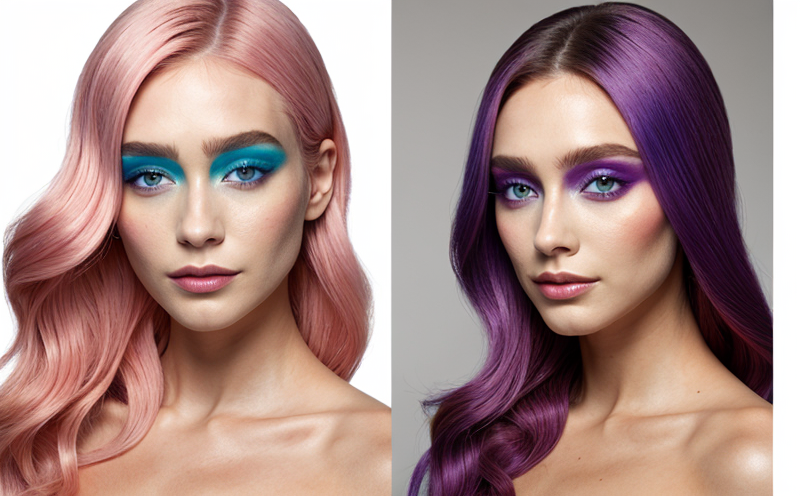Packaging Compatibility Testing in Color Cosmetics
The importance of packaging compatibility testing in color cosmetics cannot be overstated. This critical process ensures that the containers used in packaging color cosmetic products, such as lipstick, eyeshadow, and mascara, are stable and do not interact with the product ingredients in a manner that could compromise safety or efficacy. Packaging materials can include metals (tin, aluminum), plastics, glass, and various coatings. Any interaction between the container and the cosmetic product can lead to changes in color, texture, flavor, or even chemical reactions that produce harmful by-products.
For instance, certain metallic packaging may react with pigments in lipstick, causing a change in hue or consistency over time. Plastic containers might leach chemicals into the cosmetic, affecting its stability and safety. Glass containers, while generally inert, can sometimes release silicates which could affect the product's appearance. Proper compatibility testing helps manufacturers avoid these issues, ensuring that their products meet regulatory requirements and maintain quality throughout their shelf life.
The testing process involves placing a sample of the color cosmetic in different packaging materials under controlled conditions to observe any changes over time. This can include exposure to light, temperature variations, humidity, and other environmental factors that might mimic real-world storage and usage scenarios. The test results provide detailed insights into how well each material performs when used with specific types of color cosmetics.
Standardization is crucial in this testing process. International standards such as ISO 16825:2014, ASTM D3947-10, and EN 12310 provide guidelines for conducting compatibility tests on packaging materials used with cosmetic products. These standards ensure that the test methods are consistent across industries and regions, allowing for accurate comparisons of different packaging options.
Understanding the key components involved in this testing is essential for quality managers, compliance officers, R&D engineers, and procurement specialists working in the cosmetics sector. By leveraging these tests early in product development, manufacturers can make informed decisions about which materials to use, ensuring both safety and effectiveness of their products.
Industry Applications
| Product Type | Packaging Material Tested | Compatibility Indicators |
|---|---|---|
| Lipstick | Aluminum and plastic containers | Color changes, texture alterations |
| Eyeshadow | Glass jars with metal lids | Changes in pigmentation stability |
| Mascara | Polyethylene and polypropylene containers | Microbial growth or chemical leaching |
The packaging compatibility testing process is widely applicable across various cosmetic products. The table above highlights some common product types and the packaging materials typically tested for compatibility. For example, lipstick may be stored in aluminum containers due to its light-blocking properties, while mascara might use polyethylene or polypropylene containers for their durability.
- This testing ensures that color changes do not occur over time,
- Guarantees that the texture remains consistent throughout shelf life,
- Achieves stability in pigment distribution within the container,
- Prevents any potential chemical reactions that could lead to harmful by-products.
By adhering to these industry standards and performing rigorous compatibility tests, manufacturers can ensure their color cosmetics remain safe, effective, and aesthetically pleasing throughout their shelf life. This not only enhances consumer trust but also ensures compliance with regulatory requirements worldwide.
Why Choose This Test
Packaging compatibility testing is essential for maintaining the quality of color cosmetics during storage and use. It helps identify potential issues such as color changes, texture alterations, or microbial growth that could arise from interactions between the packaging material and the product contents.
This test ensures compliance with international standards like ISO 16825:2014, ASTM D3947-10, and EN 12310. By adhering to these guidelines, manufacturers demonstrate their commitment to producing safe and effective cosmetic products.
The test provides valuable data that can inform product design decisions. Engineers can use the results of compatibility tests to select packaging materials that best suit specific color cosmetics formulations.
By conducting this testing early in the development process, manufacturers can avoid costly recalls and brand damage caused by compromised products reaching market shelves.
Choosing packaging compatibility testing is a proactive approach towards ensuring product integrity. It helps build consumer confidence and maintains regulatory compliance while enhancing overall product quality. This testing ensures that color cosmetics remain safe, effective, and aesthetically pleasing throughout their shelf life, ultimately contributing to customer satisfaction and brand reputation.
Customer Impact and Satisfaction
Packaging compatibility testing plays a significant role in enhancing customer satisfaction by ensuring the highest standards of product quality. When packaging materials are compatible with color cosmetics, it leads to consistent product performance over time. This consistency is crucial for maintaining consumer trust and loyalty.
Customers expect their favorite color cosmetic products to look and perform as advertised when they purchase them. Incompatibility issues can lead to dissatisfaction, as customers may notice changes in the appearance or texture of the product after a short period. Such issues can also affect the overall user experience, leading to negative reviews and potentially damaging brand reputation.
By conducting thorough compatibility tests, manufacturers ensure that their products meet not only regulatory requirements but also exceed customer expectations. This commitment to quality translates into higher levels of satisfaction among consumers who trust the brand's dedication to producing reliable and effective color cosmetics.
The results from these tests can be used by marketing teams to communicate the benefits of using compatible packaging materials, reinforcing the message that customers are receiving a high-quality product. Transparent communication about the importance of this testing process helps build stronger relationships with consumers, fostering long-term brand loyalty.





